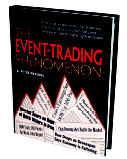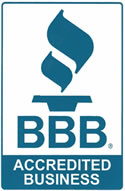.jpg)
Follow
Us:    
|
Don’t Miss These Two
Exciting Webinars
TODAY, Wednesday, June 21st at 3:30 pm CDT, join Kerry “Dr. Duke” Given for a FREE educational webinar on “Selling Puts Doesn’t Have To Be Dangerous.”
Selling naked puts has a notorious reputation, especially among stock brokers that don't understand options. When following three simple rules, selling naked puts can be appropriate for conservative investors.
Attendees will be entered into a drawing to receive an autographed copy of Dr. Duke's "Time is Money," or a FREE 30 days of his Trading Group subscription.
You still have time to sign up!
Register Now
Then, next Tuesday, June 27th at 3:30 CDT, join Avant-Garde Trading with professional trader Todd "Bubba" Horwitz for a FREE educational webinar on setting up a successful TRADING PLAN.
Learn how to build, maintain, and protect your money with Bubba as he shares his tips and how they can work for you with his 36 years of trading experience.
Webinar attendees will receive a FREE giveaway courtesy of Bubba!
Space is Limited...
Sign Up Today!

|
|
The Event-Trading system was developed by Peter McKenna, a journalist with more than 20 years of experience reporting on the stock market. As a reporter for Investor’s Business Daily, he watched in horror as thousands of small investors lost their money when the tech bubble crashed. He went looking for a better system, a system that would put the power back in the hands of the small investor and keep the so called professionals at bay. The system he found was the Event Trading Phenomenon.
 |
Technical and Fundamental
Strategies to Profit
from Market Swings

The Event-Trading Phenomenon introduces a new trading system that is destined to become the most popular trading strategy ever devised. It offers substantial profits with minimal risk.
Under the event trading rules, you will trade only when a news event makes market direction highly predictable for just one day. And when the right news event occurs, event traders trade index options rather than stocks. They do not have to be stock pickers and they can earn large, one-day profits that would not be possible with stocks. This strategy keeps market risk extremely low.
The event system is not a simple-minded, knee jerk reaction to good and bad news. It is a highly disciplined strategy that keeps investors out of the market unless the right news is released under the right market circumstances.
Trading With
The Event-Trading Phenomenon
|
|

Better
Business Bureau
 |
|
Click on authors name
to learn more
|
| |
|
|
Oil could fall to $30 a barrel.
At least, that’s the fear, as supply still outpaces demand.
As it turns out, that OPEC agreement to extend the 2016 supply reduction isn’t likely to do the trick either. In fact, if OPEC doesn’t address the need for further cuts, $30 oil isn’t out of the question, especially with heavy supply from the U.S., Libya and Nigeria. This week, we look at an opportunity for traders in shorting oil.
Next, Lee Gettess tells us what he expects from both the S&P and bond markets for the coming week.
Then, Peter McKenna details the best time for an event trader to buy.
Last, Andy Chambers presents his Weekly Market Line in the Sand Newsletter.
Enjoy!
Adrienne LaVigne
TradeWins Publishing
 |
|
Trade Opportunity Alert
by
TradeWins Publishing
Analyst: Oil Could Slip to $30 this Year
Oil could fall to $30 a barrel.
At least, that’s the fear, as supply still outpaces demand.
As it turns out, that OPEC agreement to extend the 2016 supply reduction isn’t likely to do the trick either. In fact, if OPEC doesn’t address the need for further cuts, $30 oil isn’t out of the question, especially with heavy supply from the U.S., Libya and Nigeria.
While the current OPEC agreement extends the 1.8 million bpd cuts, it’s not enough. Some analysts believe we need another 700,000 bpd added to that. If not, there’s good chance oil could plunge to $30 to $35 from its $44 handle.
Oil bulls can’t be happy with this at all.
At one time, they had hoped for $60 a barrel, and supply-demand balance.
In fact, Algerian Energy Minister Noureddine Bouttarfa once noted that oil prices could move above $55 on the idea that a supply glut could be gone by year-end. Even Russia and Saudi Arabia argued for a near-term rebalancing.
The reality is – that won’t happen. At least, not any time soon.
Already, since the middle of 2016, U.S. oil production has jumped about 10% to 9.3 million barrels per day (bpd). Worse, in the months ahead, the U.S. was expected to add another 950,000 barrels per day (bpd), overshadowing OPEC cuts even more.
Libyan output is also expected to rise above 800,000 bpd for the first time since 2014. Nigeria is expected to return to 2.2 million barrels this year, and 2.5 million bpd by 2019.
Worse, according to the IEA, supply could outpace consumption in 2018, too. “In 2018,” they noted, per Reuters, “we expect non-OPEC production to grow 1.5 million bpd, which is slightly more than the expected increase in global demand.”
Trade Opportunity Alert
|
Lee
Gettess' Market Sense
by Lee Gettess
Lee
Gettess is a top trader who is excited
to bring you his video newsletter.
Each week, Lee will share his predictions
on what he anticipates from the bond
and S&P markets.
Watch
Video
|
Event Trading: When to Buy
by
Peter McKenna
The following
is an excerpt from Peter McKenna's The Event-Trading Phenomenon
Here is a hard and fast rule to apply to your trading: Never buy at the open. The market will gap way up at the open then it will fade. This is almost a certainty; it happens more than 85% of the time. If you by at the open, you will pay a higher price for your contracts than if you wait for the price to come down.
Here’s the way the market works on the vast majority of all trading days. From 9:30 am to 9:40 am traders will rush into the market, trying to get their buy orders filled. As a result, the market will gap up. Around 9:40 am, this buying will slow briefly and sellers will overtake the buyers. The gap is being filled. Often, before turning around and going back up, the market will actually fall below the opening price.
The best time to send your option buy order is during the first reversal period. During this time, which usually lasts for about 15 minutes, from 9:40 am to 9:55 am, the price of the options will come down from their opening price. Your goal is to get the lowest possible price.
If you miss the first reversal, a second period of falling prices usually starts at about 10:10 am and lasts until about 10:25 am. The problem is that this reversal will not be as strong as the first reversal. You may not get a price as low as the one available during the first market dip. If you miss the second reversal, sit out the day. Do not chase the market after it has already made a significant gain. After the market has gone up substantially, the potential profit is not worth the risk.
The Bidding Process
When you buy an option, you engage in a bidding process. If you want to buy the Nasdaq 100 1025 call, for example, you would see the following information on your computer screen.
Event Trading: When To Buy
|
Weekly Market Line in the Sand
by Andy Chambers
The following is an excerpt from Andy Chambers' Weekly Market Line in the Sand
Every week Andy publishes his “Weekly Market Line in the Sand” newsletter. The following are trade updates from his most recent issue.
Mini DOW Futures Weekly: The trend is up and the bulls have the momentum. The next targets are 22,500 and 25,000. The initial hurdle for the bears is seen at 20,311.
DIA Weekly: The trend is up and the bulls have the momentum. The next targets are 215 and 220. The initial hurdle for the bears is seen at 203.64.
SPY Weekly: The trend is up. This week’s little pullback is expected to yield to a further advance. The next targets are 250 and 255. The initial hurdle for the bears is seen at 231.61.
To Learn More Click Here
|
|